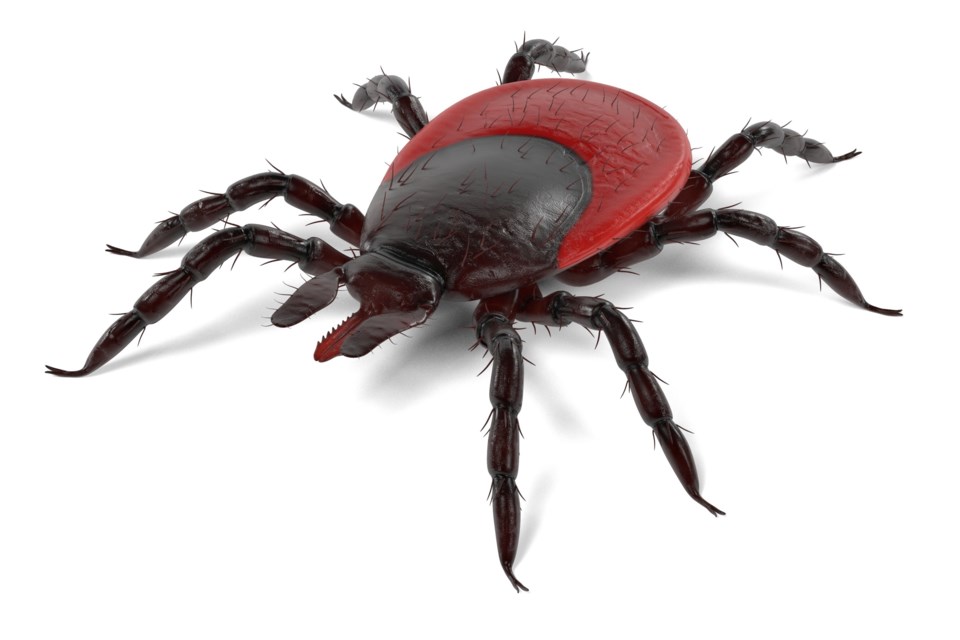THUNDER BAY — The Ministry of Health now requires Thunder Bay doctors who see patients with a specific symptom of Lyme disease to report these cases to the Thunder Bay District Health Unit.
Reporting became mandatory this year because Public Health Ontario has designated the city—for the first time—as a risk area for Lyme disease.
Lee Sieswerda, Manager of Environmental Health for TBDHU, says the health unit's surveillance program for blacklegged ticks has provided the data the government requires.
Blacklegged ticks can transmit Lyme disease to humans.
"Our surveillance found them in both the spring and the fall in a particular location. What that means is that there is a local population reproducing. They are permanently established in our area," Sieswerda told Tbnewswatch.
Designation as a risk area, in turn, elevates scrutiny for Lyme disease around Thunder Bay.
Sieswerda explained that people living in a risk area who develop a bullseye rash larger than five centimetres are considered to meet the "confirmed case" definition for Lyme disease.
It means local doctors are required to inform the TBDHU whenever they encounter a case.
"Anecdotally, we know there are quite a few people who have reported to their physician with a large bullseye rash...but because we have not been designated a risk area, they have never met that case definition. It's almost like you're in a limbo. You know you have Lyme disease but you can't really count it. You can't really report that you have it in your area with any sort of certainty" he said.
Sieswerda expects that reports of the disease "will now start to roll in," enabling health officials to develop a picture of the true extent of Lyme disease in the area.
He gives credit to TBDHU's persistence in conducting surveillance for blacklegged ticks, an effort which showed that, around Thunder Bay, about 10 per cent of them are infected with the disease.
Ken Deacon, the coordinator of the health unit's vector-borne disease program, said the late spring has kept blacklegged ticks from showing up so far, but that should change within a couple of weeks.
Although it was a harsh winter, the ticks had plenty of snow cover, and were "nice and cozy in the leaf litter, having a good snooze. I would say that by May 24 we should have a really good batch," Deacon said.
TBDHU continues to ask people who encounter blacklegged ticks to bring them to its offices on Balmoral Street so they can be tested for Lyme disease.
"Absolutely. Even if you are not sure what it is, please bring it in. We would also like to know where you think you acquired it, so we can continue our active surveillance," Deacon said.
That means that, in addition to testing ticks presented by the public, TBDHU will send staff into the field to try to collect them in areas where they have been found in the past, such as Belrose Road.
It also intends to expand the program to other sites around the city.
Deacon acknowledged that the advice he's given over the past few years about the necessity to take precautions against blacklegged tickets may be "getting old" to some, but people should remain vigilant.
"Tuck in your cuffs so they can't climb up your legs, wear light-coloured clothing so you can see them more easily, wear some sort of insect-repellant, and when you've been outdoors, do a really thorough tick check after you come in."
The risk of getting Lyme disease is considered low if a blacklegged tick is attached for less than 48 hours.
